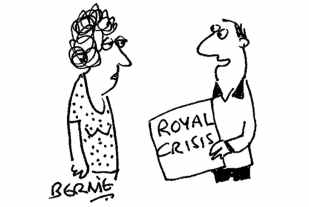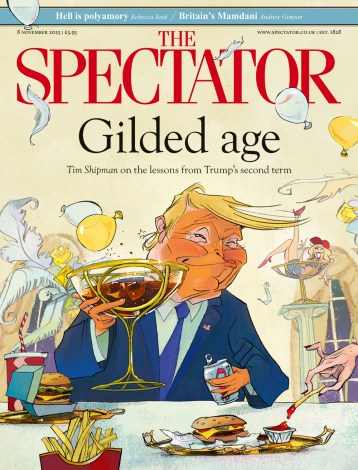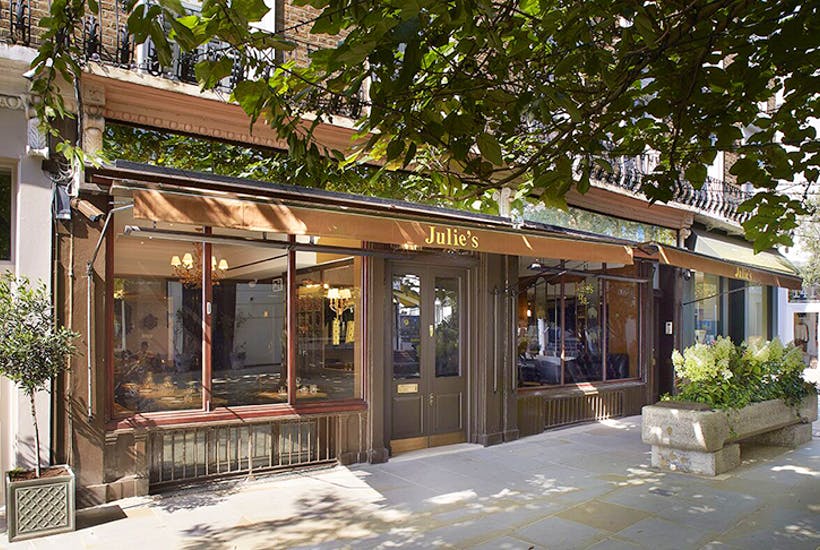Julie’s is a 50-year-old restaurant in Holland Park, London, newly emerged from three years of closure as plushly renovated as its customers. The website calls it ‘a Holland Park favourite, neighbourhood classic and hangout for the Hollywood set, high society and rock stars since 1969’. Whenever I hear the words ‘high society’ I reach for my water pistol, as Hermann Goring didn’t say, but I do remember a birthday party at Julie’s 20 years ago when it seemed pleasingly decadent. It was designed by the owner, Julie Hodgess, the designer of the Biba boutique. I remember a series of deeply coloured rooms and dusty curtains and a faint and thrilling sense of mystery.
Now it is reborn, and it suffers from the disease of the reborn as detailed, say, in Stephen King’s Pet Sematary which is not technically restaurant criticism but I include it anyway: they have broken it.

The brown and gold awning is still there — west London, like Beverly Hills, likes awnings probably because they claim to protect hair from the broken sexual currency of ageing — but, inside, Julie’s has collapsed to obsessive compulsive cleaners and the design philosophy (I joke) of Soho House, whose name, considering that very philosophy, is an affront to still-living bohemians.
Can there be too many bold fabrics for the stomach to bear? There is still bright stained glass and neo-Gothic carved interiors and multiple dining rooms, but it feels stripped out and generic. Julie’s has ceased to look like the home of an affluent, mildly adulterous friend and looks, instead, like Harrods. That is the sweet rot of success in restaurant design and the River Café, if famous restaurants had support groups, would surely identify with Julie’s; if you have too many imitators, you are pastiche.
Can I blame the district? Holland Park is named for the gardens of a Jacobean mansion that no longer exists, and it is sanitised by status panic. Its rows of pale terraces look like newly renovated teeth which are, with their tiny ornamental topiary, pretentious too; pretentious tooth houses, then, with a large Range Rover dealership outside. How the owners park I cannot say. I do not care.
The food has sacrificed taste for a childlike and unwholesome prettiness
The food, meanwhile, falls into the trap that awaits all fashionable restaurants with a large female constituency; it has sacrificed taste for a childlike and unwholesome prettiness. I do not know when restaurants became so gendered, but this is fairy food for fairy wives seeping in and out of Range Rovers and tooth houses fretted with ornamental topiary. Dish after dish — pumpkin soup, beef tartare, sponge — looks pretty but tastes of nothing; I speculate that they eat it only because they cannot wear it. Perhaps they should.
So, another west London restaurant for rich women. It is better than some — I tremble to remember Pharmacy — and worse than others; but everything original is lost.
The website shows Julie’s as it wishes to be seen, because people are ever credulous. It is a watercolour café in a charming street with a small and a large dog, which should ideally represent the class system (‘two dogs; between whom there is no intercourse and no sympathy’) but probably doesn’t. That is, it looks like an idealised community, like the Primrose Hill set of Paddington 2 — but just as a courteous talking bear cannot turn a central London prison into Busby Berkeley’s patisserie of dreams (no rapes, no drugs, no guns), a watercolour cannot make a whimsical restaurant look like the centre of a community rather than a small ghetto situated too close to the A40. There is something pathetic about such ghettos, but this is a frightened age.
Julie’s Restaurant, 135 Portland Rd, London W11 4LW, tel: 020 7229 8331.







Comments